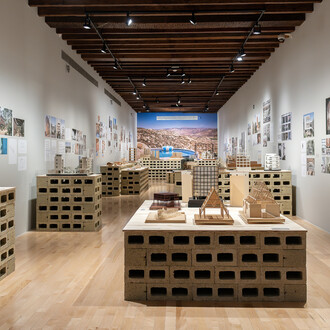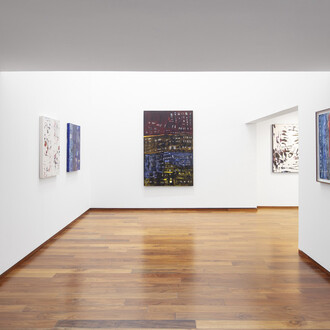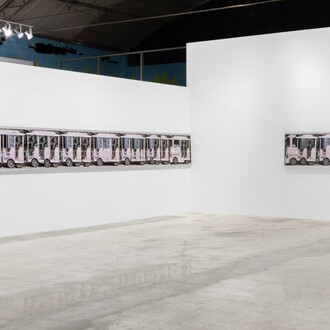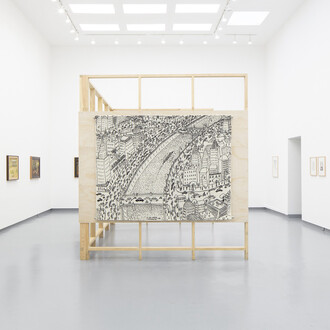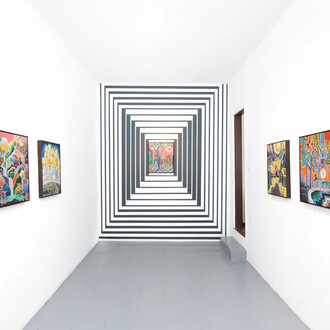This exhibition of graphic and multimedia art brings together the work of the international Latino Toons Collective as a tribute to indigenous cultures of Latin America. Through the graphic narrative of comics and illustration we aim to spark a renewed discussion about these cultures. Its conception is the result of an investigation that began in 2015, in order to elaborate a book and related exhibitions, the third anthology of Taco de ojo.
The origins of the magazine and the collective date back to August 2013, when it was founded by the artists and zinesters, André Ducci (Brazil), Jorge Pérez-Ruibal (Peru), Tomás Ives (Chile), Marco Tóxico (Bolivia), Mr. Glaubitz (México) and NAVA as editor. It champions the cause of poetry, graphic art and Latin American comics without barriers. With eight pages per guest country, the experimental magazine quickly grew in content and collaborators. The name Taco de ojo refers to the Mexican concept of eating with our eyes, to imbibe that which is attractive. Lacking commercial backing, and struggling with distribution, the format adapted into an anthological book for the second issue. Taco de ojo: The Pink Book, printed entirely in large risograph format as an art book, opened the door to collective exhibitions. With a projection of seven thematic numbers, Taco de ojo has grown to have three hundred pages and more than fifty collaborators, with recent incursions into Augmented Reality mapped on top of the original art.
This is the first exhibition in México of works made in risograph on a large scale, presenting thirty seven Latin American authors. Risograph is a printing technique based on soy inks on absorbent paper, with registration required for each color. The resulting reduced palette determines the aesthetics and the types of works that are best reproduced, especially those based on the use of line and fill colors. Generating a color out of direct ink implies a use of prepress similar to the old rotary printing presses, through the generation of halftones and the combination of various inks. Each sequential image is multiplied in difficulty due to the number of colors and required registers, resulting in a reduced print run, which is counterbalanced with the wide possibilities of experimentation and fine-tuning during the production process, the end result bringing together the professions of draftsman and printers as creators. This exhibition wouldn’t have been possible without the support of Cráter Invertido (CDMX), Gato Negro Ediciones (CDMX) and Risograph Lab (ATX).





